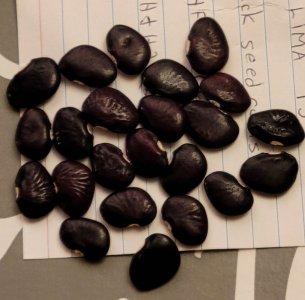Jack Holloway
Deeply Rooted
A tablespoon of lysol to a gallon of water, water the all plants in the house thoroughly, as in all of the soil must be wet, but this needs to be done 4 weeks in a row, at least. With the life cycle of fungus gnats, this solution will kill the larva, but not the pupa (not sure about the eggs), so the adults flying around will lay more eggs, which hatch, so those larva have to be killed. adults will emerge from the pupa, laying eggs, so you've got to prevent the larva managing to pupate. Doing this enough will finally get rid of them. Provided more don't come inside from outside, and you don't get more from new potting soil, or plants. Anything that helps reduce the adult population while treating the soil helps, obviously. Good luck.I would take that comment with a grain of salt. And maybe some ipecac.
While I wouldn't talk anyone out of experimentation, you might have trouble getting either Velvet Bean or Winged Bean to maturity. Both grew here, but neither was able to even get close to mature seed before frost.
We had (and still have) trouble with fungus gnats, when we brought a new plant into the house. Apparently it was infested, and the gnats quickly spread to many of DW's house plants.We put several bowls out near the plants, with a solution of vinegar, wine, and a couple drops of dish soap. Those traps caught hundreds. We hung sticky fly strips directly above the soap traps, and they caught hundreds more... but they were still everywhere. They seem especially attracted to open books, drinks left uncovered, and the light from a cell phone.
We finally tried treating the soil in all of the pots with a dilute solution of hydrogen peroxide & insecticidal soap. That kills the larvae in the soil; but it takes awhile for the adult population to die down. We treated all of the pots again (with all of DW's plants, no small task) and only had a few for awhile. They are just beginning to show up again, so we will probably have to re-treat again soon. Unfortunately, the only "cure" will probably be to completely re-pot all plants once the weather warms... or to hope that once placed outside, natural predators will eliminate them.

